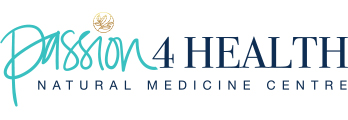Iodine, an often forgotten mineral with enormous potential
There are many reasons why people seek assistance from complementary and alternative medical practitioners. Some of the more common goals we hear from clients include a desire to:
- maintain a healthy weight range with a high percentage of active muscle mass and low fat;
- reduce blood cholesterol levels;
- prevent fatigue and boost alertness and energy;
- maintain hormonal balance.
There are many ways to meet these goals, however one simple, time tested, solution that has been proving highly effective is supplementation of Iodine.
Iodine was once present in our diets in quite large quantities, the average levels of iodine in most typical Australian diets has been on the decline for the last ten years. In fact, the World Health Organisation has defined Australian’s as mildly iodine deficient. Much of the World Health Organisation’s strategy for addressing iodine sufficiency has been through the use of iodised table salt, which to a large extent has been hampered by the increasing tendency to low salt diets. This has now lead to the re-introduction of iodine to our bread. This in fact a little bit of deja-vu as in the 1980’s iodine was regularly used a dough condition in the manufacture of bread and as an antiseptic in dairy farming.
Iodine is an essential trace mineral for many functions within the body based on it’s connection with the correct function of the thyroid gland, one of the major components of the endocrine system, and it’s ability to detoxify heavy metals. Our thyroid gland uses iodine to produce the hormones known as T3 and T4; hormones which both directly and indirectly allow all the goals mentioned above to be achieved. One of the most common results of iodine deficiency is a condition known as hypothyroidism, an under active thyroid. The symptoms associated with hypothyroidism include weight gain (and not muscle either), fatigue and problems with energy levels.
In a clinical environment there is a simple method of testing for iodine sufficiency which involves painting an area of skin with a particular iodine formulation. The amount of time taken for the iodine to absorb into the skin is generally a good indicator as to the level of iodine in the body. If the iodine is absorbed quickly there is a requirement for additional iodine in the diet. In particularly sensitive people this may result in a mild allergic reaction. In our clinical and personal experience we have found the vast majority of people need to increase their iodine intake.
There are a number of ways to address this iodine deficiency. We touched on this briefly in our November newsletter, but will go into more detail here.
Firstly, we can increase iodine levels by increasing our intake of foods that contain iodine. There are a number of very iodine rich foods available, which consumed as part of a balanced diet can increase our levels of iodine. Some examples include dulce, seaweed, kelp and fish. In fact, most foods sourced from the sea are naturally high in iodine. This coincides with a highly level of iodine sufficiency amongst island nations eating a predominately seafood. both plant and animal, diets. Over the last five years there has been a trend to using seawater, either fluid or evaporated in agriculture. It will be interesting to see if this trend leads to a higher percentage of iodine in our foods.
Secondly, we can increase our iodine levels by reducing, or in cases of severe iodine deficiency, eliminating foods that compete with the absorption of iodine. There are a number of such foods, some examples include cabbage, broccoli and soy. Once iodine levels have increased these can be returned to the diet with regular monitoring of iodine levels using the painting method.
A third method of increasing iodine levels is through the use of supplementation. Many multi-mineral formulas contain iodine, though be sure to utilise one that is readily bio-available. While the recommended daily intake of Iodine is 150mcg, a therapeutic dosage can be anything up to 1000 mcg.
An alternative form of iodine supplementation that some have found quite useful is a formula known as Lugol’s Solution. This contains 5% iodine and 10% potassium iodide in water. Once available from most pharmacies it now needs to be sourced from compounding chemists. Researchers using this formula have had interesting results in a wide variety of conditions including depression, menstrual problems, brain fog, ovarian cysts, breast cysts and fibroids.
As Lugol’s Solution is a liquid formulation it can also be “painted” on to the affected area.
While after reading this iodine supplementation may seem like a miracle cure it is just one component of a balanced approach to health and wellbeing. As always be sure to discuss your specific dietary and health requirements with a qualified nutritionist or general practitioner.
